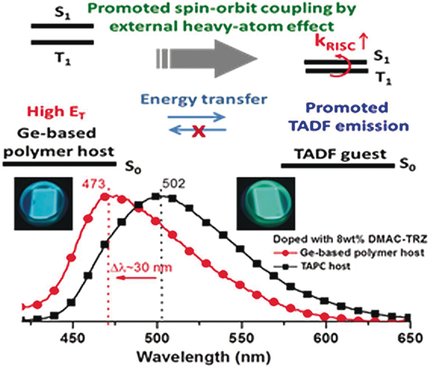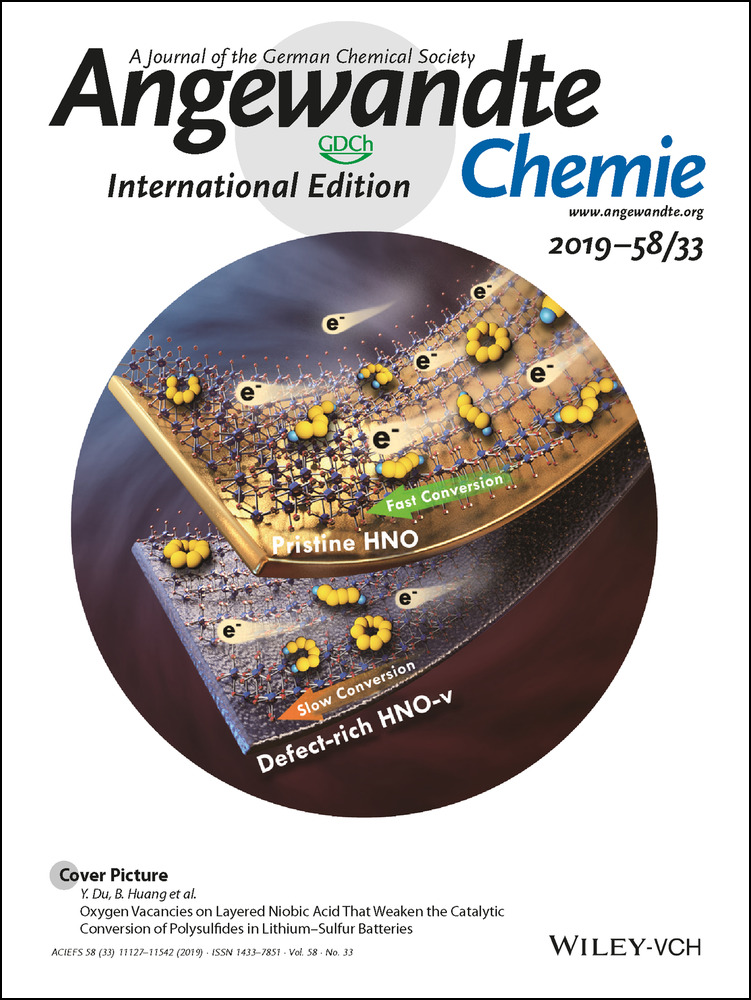Acridan-Grafted Poly(biphenyl germanium) with High Triplet Energy, Low Polarizability, and an External Heavy-Atom Effect for Highly Efficient Sky-Blue TADF Electroluminescence
Graphical Abstract
Reaching for the sky: The heavy atom Ge in a σ–π conjugated polymer host provided a high ET level for efficient host–guest energy transfer, low orientation polarizability leading to bluer emission from the guest, and enhanced spin–orbit coupling to promote reverse intersystem crossing and the harvesting of triplet excitons for light emission. The observed sky-blue TADF electroluminescence had a record external quantum efficiency of 24.1 %.
Abstract
We propose the novel σ–π conjugated polymer poly(biphenyl germanium) grafted with two electron-donating acridan moieties on the Ge atom for use as the host material in a polymer light-emitting diode (PLED) with the sky-blue-emitting thermally activated delayed fluorescence (TADF) material DMAC-TRZ as the guest. Its high triplet energy (ET) of 2.86 eV is significantly higher than those of conventional π–π conjugated polymers (ET=2.65 eV as the limit) and this guest emitter (ET=2.77 eV). The TADF emitter emits bluer emission than in other host materials owing to the low orientation polarizability of the germanium-based polymer host. The Ge atom also provides an external heavy-atom effect, which increases the rate of reverse intersystem crossing in this TADF guest, so that more triplet excitons are harvested for light emission. The sky-blue TADF electroluminescence with this host/guest pair gave a record-high external quantum efficiency of 24.1 % at maximum and 22.8 % at 500 cd m−2.





